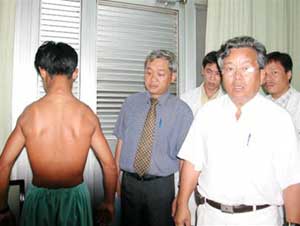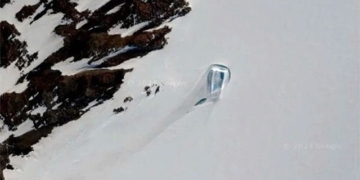 |
|
A case of Deltoid muscle fibrosis admitted to Chợ Rẫy Hospital on May 18 (Photo: K.S) |
Typically, injections are made in the front and outer parts of the muscle, leading to fibrosis primarily in the front. This fibrosis resembles a burned scar that tightens one bundle within the Deltoid muscle. Consequently, patients experience significant contraction when trying to extend their arms; when they lower their arms, the shoulder blade protrudes.
When surgically removing the fibrotic area at the front, the shoulder no longer protrudes backward. After surgery, the remaining muscle bundles of the Deltoid are healthy, making the chance of recurrence rare.
Not only is the Deltoid muscle affected, but the quadriceps muscle in the thigh (which extends the leg) can also develop fibrosis from injections. Similar to the Deltoid, fibrosis in the quadriceps can prevent patients from bending their knees.
In Northern Vietnam, injections into the thigh muscles can cause knee stiffness, necessitating surgery to allow the knee to bend again. The surgery for the Deltoid muscle only involves removing the fibrotic area, but the quadriceps muscles are interconnected, requiring lengthening of the muscle. This lengthening can result in a loss of 15 to 25 degrees of extension capability, leading to weakness in the leg and even causing the person to lean forward while walking.
Injecting into the Deltoid and quadriceps muscles carries risks, with injections into the quadriceps being more hazardous. Beyond causing fibrosis of the quadriceps muscle, it can lead to greater discomfort since it prevents knee bending, making surgery more complex.
According to Dr. Lâm, any injection into these muscles can have significant consequences. Therefore, it may be advisable to prohibit injections into the quadriceps and Deltoid muscles in children.
KIM SƠN


















































